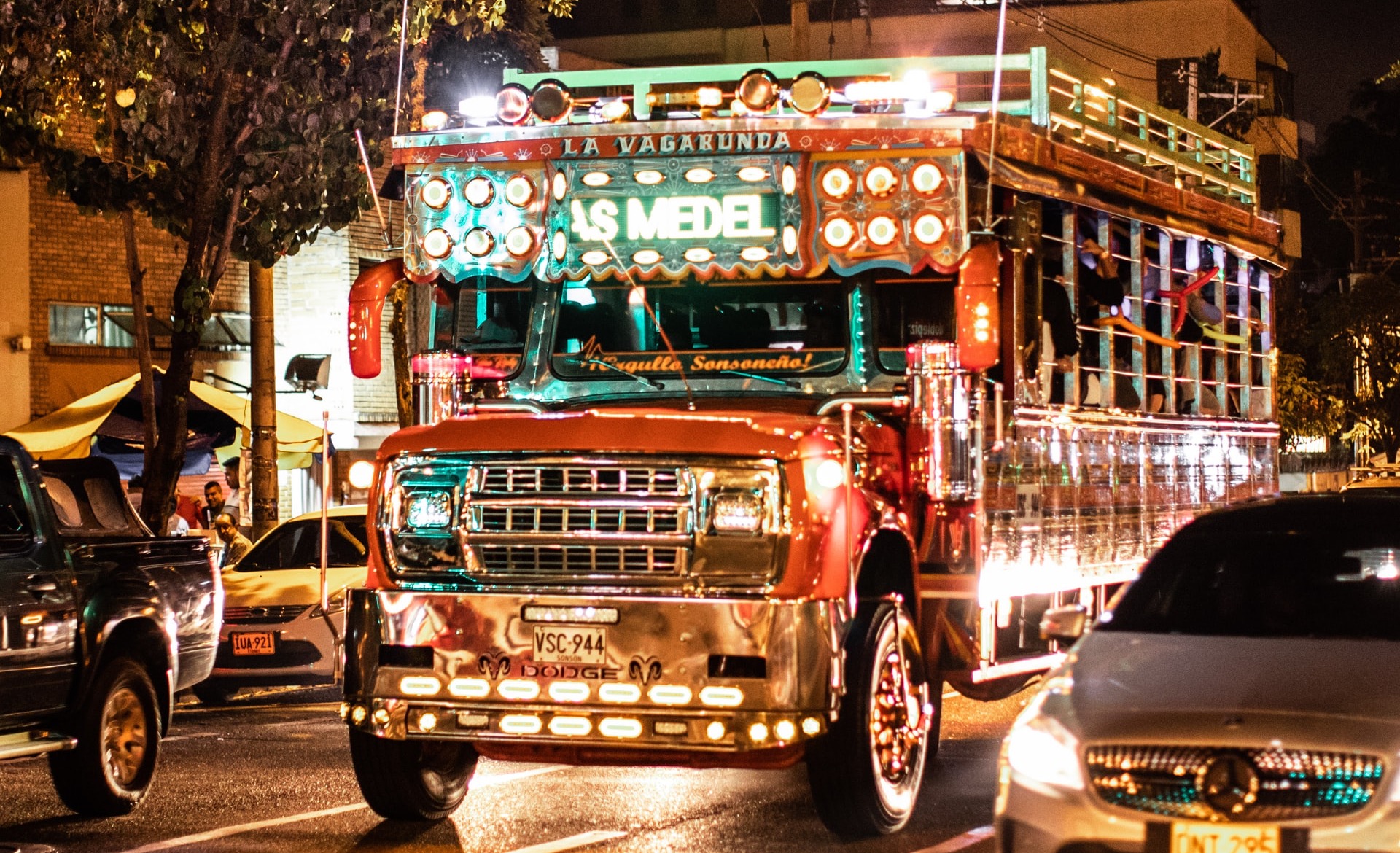Understanding local transport is vital for a successful event. People need to get there, so let’s look at the multiple options available.

Living in Chicago in my 20’s, I could get to most events with a $2 train ticket and a few blocks of walking. Sometimes I could get there by bus. Occasionally I cycled. Very rarely, a taxi was needed (since Uber and Lyft didn’t exist back then). Every once in a while, the only option was a car.
Here is a rundown of all the ways your guests can get to your event with tips on when each one is best.
Self Powered Forms of Local Transport: Walking & Cycling
You can host a formal event and have people get there via their own power. This is definitely the greenest way to get to an event.
I love to walk. Just not very far when in high heels. Most people are okay with walking for about five minutes in formal attire (in some cases, that is the distance from the parking to the event). In dense urban environments, this can be the easiest option. For some conferences held in downtown areas, events are held in the hotel you are staying at. Still, dinner may be at the restaurant a block or two away. In a case like this, suggest that your guests walk there.
If the walk is more than about five minutes, make sure your guests are aware of this. Also, let them know if there are lots of hills or stairs. Some people may still be happy to walk, but others may not, especially if there is inclement weather. This could also be difficult for people with mobility issues.
I lived in Delft, The Netherlands, for two years, and we rode our bikes everywhere. I even rode mine to my graduation. It’s a nice touch to ensure your event has secure bicycle parking and a safe place for cyclists to store their helmets. For guests who don’t have their own bikes, many major cities now have bike-share programs (such as Velib’ in Paris, CitiBike in New York, EcoBici in Buenos Aires) where guests can rent and return the borrowed bikes to public racks.
Local Transport Is Public Transport: Bus, Train, Tram & Trolley
Once again, this works best for metropolitan areas, especially those that have frequent public transport available. You may only have public buses available, or you may have a combination of two or three different forms of public transportation. Regardless, the key with public transport is keeping your guests informed.
Before your event:
- Make sure that there is regular public transport on that day.
- Check if there are conflicting events that may make public transport more crowded, such as rush hour, school holiday, or a professional sporting event.
- If there are conflicting events, advise your guests to leave extra time to travel, or recommend alternate routes. When I am a guest in a different city, I like to use the Moovit app to get familiar with their public transport options because it also gives estimated trip length.
Also, make sure you give your guests clear directions, no matter what type of transport they choose. For example, many subway stops have multiple exits. Make it clear to your guests that they should “follow the exit signs to the NE corner that says Washington, then when facing the street turn left and start walking and the building will on your left with the blue and white sign” rather than just “get off at the Lake Street exit.”
One last tip, make sure your attendees know what time public transport ends. There is nothing worse than waiting on a street corner in the middle of the night for a bus that will never come.
Ride-Sharing Rocks: Taxis, Uber & Lyft
Some places are too far to walk to and have no public transport available. In these cases, having a recommended local taxi service can really help. Of course, many people are quite comfortable using Lyft and Uber and other local car services independently. However, some people are less comfortable with technology and will be turning to their hosts for a recommendation.
Personal Private Transport: Hiring A Car
Some events may require hiring a private driver to get to an from a particular event or for a few days. This is most useful for guests who need extra time, like parents of small children, or those with health issues.
This was done right at my friend’s wedding in Bogota, Colombia. We were the of the only out-of-town guests (and traveling with two children under the age of four). The day before the wedding, the groom informed us that he had reserved us a driver to take us to and from the wedding and provided us with the driver’s mobile number. The groom had already paid for the driver, given him the hotel’s locations and the event. The driver even knew the approximate times. However, he also instructed us to call the driver to confirm approximately half an hour before we needed to be dropped off and picked up. Bogota traffic could be unpredictable.
Having this all arranged – the times, cost, location – ahead of time, plus having a contact number, allowed me to enjoy the wedding. We had no worry about how we would get ourselves back to our hotel in the middle of the night in an unfamiliar country.
Private Group Transport: Limo, Van, Bus, & Chiva

When you have an event with many out of town guests going to and from a set place at the same time, such as a wedding or a concert, private group transport is a great option.
For my wedding in Cuenca, Ecuador, all the out-of-town guests stayed at one of two hotels. We hired two vans to bring guests to the wedding, each starting at a different hotel simultaneously. However, for the return, we had each van pick up the guests from the wedding at different times (one earlier, the other about an hour or two later) and gave the guests the option of being dropped off at either hotel. This staggered return gave guests more control over how long they wanted to stay.
Personal Transport: Personal Vehicles
This is the most convenient form of transport for those who own a vehicle. And in many places, it is the only form available. The biggest thing to consider is parking.
But let’s get the obvious drawbacks out of the way. Drunk driving and driving at night are two of the top causes of car accidents. Many events serve alcohol and end when it is dark (especially in winter). And many people like driving there own vehicles to events.
If you are hosting an event that includes alcohol, having alternative transport for those who are unable or unwilling to drive home should be compulsory. This could be as simple as assuring the driver that their vehicle will be safe overnight and calling them a taxi. The majority of people are responsible enough to not drink if they will be driving, but there are always exceptions. At the wedding in Bogota, I learned that many fancy events provide a transportation service that will drive a drunk guest’s car home for them (as well as the guest).
As with public local transport, make sure your guests are aware of any conflicting events that could cause traffic and delay their arrival.
Carefully Consider Parking
This may seem like the most straightforward part, but it is not. There are multiple ways that parking can confound even the most knowledgeable guest.
Ensure your guests understand if there is self-parking available or if valet parking is required, as well as the approximate cost and who will be covering it. In some places, no one ever pays for parking. In other areas, you are expected to cover the cost of guest parking. At yet other sites, your guests would need to pay unless they get their parking tickets validated at the event location.
Parking options need to be clear. If there is no official parking, provide recommended parking places for your attendees.
Considering Local Transport Makes For A Memorable Event
Being on top of local transport really starts your event off on the right foot. No matter how your guests get to and from your event, the most important thing is to let them know their options.

